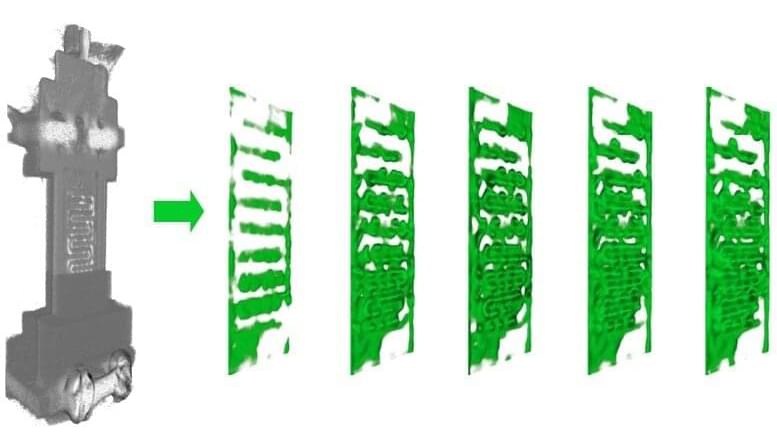Teams from Helmholtz-Zentrum Berlin (HZB) and University College London (UCL) have visualized the water distribution in a fuel cell in three dimensions and in real time for the first time by evaluating neutron data from the Berlin Experimental Reactor shut down in 2019. The analysis opens new possibilities for more efficient and thus more cost-effective fuel cells.
“In a fuel cell, hydrogen and oxygen are combined to form water. This produces electrical energy,” explains Ralf Ziesche from the imaging group at HZB. “Probably the most important component inside the fuel cell is the membrane.” It is only about 20 micrometers thick (half as wide as a human hair) and connected with various functional layers to form a separation area about 600 micrometers wide inside the fuel cell.
“The membrane composite snatches the electrons from the hydrogen atoms. Only the hydrogen nuclei—the protons—can pass through the membrane.” The electrons, on the other hand, flow off via an electrical connection and are used as an electric current. Air is let in on the other side of the separating wall. The oxygen it contains reacts with the protons that come through the membrane and the electrons that flow back from the other side of the electric circuit. Pure water is produced.
